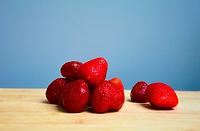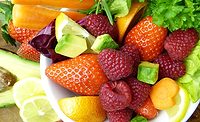The Environmental Working Group (EWG) has once again released their annual list of the “dirtiest” and “cleanest” fruits and vegetables available to U.S. consumers.
EWG’s analysis is drawn from data provided by the U.S. Department of Agriculture (USDA)’s Pesticide Data Program. The Department does wash, peel, and scrub, each produce item prior to pesticide testing. Since pesticide contamination varies by crop, it is important to understand which items are most or least contaminated.
This year, the dirtiest produce commodity, according to the USDA’s Pesticide Data Program, is not a fresh fruit or vegetable but a dried one—raisins.
Traditionally, EWG’s Shopper’s Guide to Pesticides in Produce™ has included fresh fruits and vegetables only. But because the USDA tested raisins last year for the first time since 2007, EWG decided to see how they would fare on the Dirty Dozen™ annual ranking of the fruits and vegetables with the most pesticides.
Almost every sample of non-organic raisins tested—99 percent—had residues of at least two pesticides. On the 2020 Dirty Dozen, raisins would rank worst of all fruits tested, including strawberries, nectarines, apples and cherries, all of which had residues of two or more pesticides on at least 90 percent of samples. Since pesticide contamination varies by crop, it is important to understand which items are most or least contaminated.
Also important to note is that the USDA does not test for all pesticides used in crop production. Notably, it does not analyze glyphosate, or Roundup, the most heavily used pesticide in the U.S., but high levels can be found in several grains and beans, such as oats and chickpeas, due to its increasing use as a pre-harvest drying agent.
Here are the top foods that consistently have the highest concentration of pesticide residues:
- Strawberries
- Spinach
- Kale
- Nectarines
- Apples
- Grapes
- Peaches
- Cherries
- Pears
- Tomatoes
- Celery
- Potatoes
- More than 90 percent of samples of strawberries, apples, cherries, spinach, nectarines, and kale tested positive for residues of two or more pesticides.
- Multiple samples of kale showed 18 different pesticides.
- On average, kale and spinach samples had 1.1 to 1.8 times as much pesticide residue by weight than any other crop tested.
For 2020, the Clean Fifteen—produce items that tend to have the least pesticide residues are:
- Avocados
- Sweet corn
- Pineapple
- Onions
- Papaya
- Sweet peas (frozen)
- Eggplants
- Asparagus
- Cauliflower
- Cantaloupes
- Broccoli
- Mushrooms
- Cabbage
- Honeydew melon
- Kiwi
- Avocados and sweet corn were the cleanest. Fewer than 2 percent of samples showed any detectable pesticides
- With the exception of cabbage, all other products on the Clean Fifteen tested positive for four or fewer pesticides.
- Almost 70 percent of Clean Fifteen fruit and vegetable samples had no pesticide residues.
- Multiple pesticide residues are extremely rare on Clean Fifteen vegetables. Only 7 percent of Clean Fifteen fruit and vegetable samples had two or more pesticides.
EWG is a nonprofit and nonpartisan group that has been ranking fresh produce based on their levels of pesticide contamination (number of pesticides and amount of each pesticide) since 2004. The results are compiled into their Shopper’s Guide to Pesticides in Produce each year. The guide is meant to be a resource for consumers who cannot buy organic produce—for whatever reason. With this list, consumers can choose produce types based on their possible presence of pesticide contamination.



